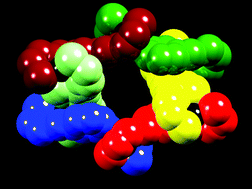Monomer, dimer or cyclic helicate? Coordination diversity with hard–soft P,N-donor ligands†
Abstract
We report the synthesis of copper(I) complexes of three

* Corresponding authors
a
Department of Chemistry, University of Basel, Spitalstrasse 51, CH-4056 Basel, Switzerland
E-mail:
catherine.housecroft@unibas.ch
Fax: +41 61 267 1018
Tel: +41 61 267 1008
We report the synthesis of copper(I) complexes of three

 Please wait while we load your content...
Something went wrong. Try again?
Please wait while we load your content...
Something went wrong. Try again?
E. C. Constable, N. Hostettler, C. E. Housecroft, N. S. Murray, J. Schönle, U. Soydaner, R. M. Walliser and J. A. Zampese, Dalton Trans., 2013, 42, 4970 DOI: 10.1039/C3DT32560A
To request permission to reproduce material from this article, please go to the Copyright Clearance Center request page.
If you are an author contributing to an RSC publication, you do not need to request permission provided correct acknowledgement is given.
If you are the author of this article, you do not need to request permission to reproduce figures and diagrams provided correct acknowledgement is given. If you want to reproduce the whole article in a third-party publication (excluding your thesis/dissertation for which permission is not required) please go to the Copyright Clearance Center request page.
Read more about how to correctly acknowledge RSC content.
 Fetching data from CrossRef.
Fetching data from CrossRef.
This may take some time to load.
Loading related content
